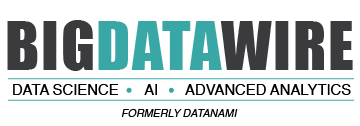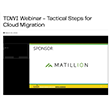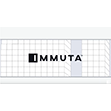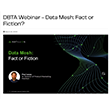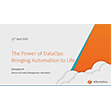
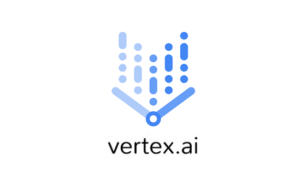
Generative AI is taking the world by storm, as organizations discover the myriad ways it can be used to serve and entice customers. With today’s enhancements to Vertex AI, Google Cloud is giving its customers more GenAI capabilities to choose from.
The pace of adoption of GenAI and large language models (LLMs) has been nothing but astonishing since OpenAI rocked the world with the launch of ChatGPT nine months ago. It also put Google in the unconventional position of playing catchup with OpenAI and its partner Microsoft–which is ironic since Google developed the core transformer model technology underpinning LLMs.
Google Cloud has narrowed the gap considerably since it started adding GenAI and LLM capabilities to Vertex AI, its flagship product for enterprise AI. According to June Yang, Google Cloud’s vice president of Cloud AI and industry solutions, the number of GenAI customer accounts in Vertex AI has grown by more than 15x in just the past quarter.
“And the GenAI products we’re seeing on Google Cloud Platform has grown by over 150 times,” Yang added during a press conference last week. “Really, just a staggering amount of growth. We’re very happy to see this type of demand.”
Newcomers to Vertex AI will have a veritable smorgasbord of LLMs and image-generating models to choose from, as the company now boasts more than 100 large foundational models in its Model Garden. PaLM is the hometown favorite, as a Google product, but you can also find Llama2, made by crosstown rival Meta, wandering the Garden. Claude 2, a foundation model developed Anthropic, is another third-party model now available to Vertex users.
An upgrade to PaLM will expand the input length by more than 4x, to 32,000 tokens. That will make it easier for customers to input longer documents and pieces of conversation into Google’s biggest foundational model, Yang says. “One of the key requests we’ve heard from customers is they want a bigger context lens windows so they can input more data,” Yang said.
PaLM also boasts full compatibility with 38 languages, including Arabic, Chinese, Japanese, German, and Spanish, among others. There are more than 100 more languages in private preview for PaLM, Yang added. Codey, a text-to-code model developed by Google, can boast up to 25% better code generation, Yang said. And Imagen, Google’s model for image generation, also boasts better quality output.
In addition to increasing the breadth and quality of foundation models, Google Cloud also announced that Vertex AI Search and Conversation is now generally available.
Vertex AI Search and Conversation utilizes vector search capabilities under the covers to provide a better search experience than keyword-search alone can provide, but without requiring advanced AI skills to integrate the search engine into customer environments. It also brings features like multi-turn search, which provides a more streamlined conversation, and conversation and search summarization.
“Think about this as Google Search for your business data,” Yang said. “You may have seen Google Search’s generative experiences from a consumer side. With Vertex AI Search, you can now offer the same generative AI experiences to your employes, partners, and customers, with built-in low code, multi-model and multi-language capabilities.”
Google Cloud also announced the general availability of Vertex AI extensions, which is set of developer tools within Vertex AI Search and Conversations that connect models to APIs to take action on real-time data.
“With extensions, a developer can now build their own extension or leverage an extension built either by Google or our partners,” Yang said. “And developers can use these extensions to build powerful GenAI application, like digital assistant, search engines, automated workflow, and more.”
The company said it’s developing pre-built extensions that connect Vertex AI to Google Cloud databases services like BigQuery and AlloyDB, the company said. It’s also committed to connecting to third-party NoSQL databases from MongoDB, Redis, and DataStax .
Google Cloud made the Vertex AI announcements at Google Cloud Next, a multi-day conference that’s expected to attract 20,000 people to San Francisco this week.
Related Items:
Duet AI Goes Everywhere in Google’s Cloud
Google Cloud Levels Up Database Services with Cloud SQL Enterprise Plus
Google Cloud Bolsters Data, Analytics, and AI Offerings
February 7, 2025
- Palantir Wins Dresner Advisory Services 2024 Application Innovation and Technology Innovation Awards in Multiple Categories
- MOSTLY AI Unveils Open-Source Toolkit for Synthetic Data Generation
- Pecan AI Launches AI-Driven Co-Pilot for Predictive Analytics, Expanding Access to ML
- European Union: First Rules of the Artificial Intelligence Act Are Now Applicable
February 6, 2025
- SoftServe Survey Finds 58 Percent of Leaders Report Using Inaccurate Data
- Oracle Recognized as a Leader in the 2025 IDC MarketScape
- Cognida.ai Secures $15M Series A from Nexus Venture Partners
- TrueFoundry Secures $19 Million Series A Funding to Transform AI Deployment
- Glean Achieves $100M ARR in Three Years
- Moveworks Launches Quick GPT
- Qumulo Announces Cloud Data Fabric File System
- Aerospike Unveils Database 8 with Distributed ACID Transactions for OLTP
February 5, 2025
- Lightning AI Brings DeepSeek to Private Enterprise Clouds with AI Hub
- PEAK:AIO Powers AI Data for University of Strathclyde’s MediForge Hub
- dbt Labs Surpasses $100M ARR, Expands Global Customer Base
- Qlik Connect 2025 Brings AI, Iceberg, and Automation to the Forefront
- Immuta Finds Legacy Data Provisioning Systems Are Hindering AI Adoption
- Arcitecta Named a Leader in Coldago Research’s Map 2024 for Unstructured Data Management
- Hydrolix Releases Apache Spark Connector for Databricks Integration
February 4, 2025
- Inside Nvidia’s New Desktop AI Box, ‘Project DIGITS’
- The Top 2025 Generative AI Predictions: Part 1
- OpenTelemetry Is Too Complicated, VictoriaMetrics Says
- PayPal Feeds the DL Beast with Huge Vault of Fraud Data
- The Top 2025 GenAI Predictions, Part 2
- Slicing and Dicing the Data Governance Market
- What Are Reasoning Models and Why You Should Care
- Why Data Lakehouses Are Poised for Major Growth in 2025
- Your APIs are a Security Risk: How to Secure Your Data in an Evolving Digital Landscape
- Top-Down or Bottom-Up Data Model Design: Which is Best?
- More Features…
- Meet MATA, an AI Research Assistant for Scientific Data
- Dataiku Report Predicts Key AI Trends for 2025
- AI Agent Claims 80% Reduction in Time to Complete Data Tasks
- IBM Report Reveals Retail and Consumer Brands on the Brink of an AI Boom
- Qlik and dbt Labs Make Big Data Integration Acquisitions
- Bloomberg Survey Reveals Data Challenges for Investment Research
- Collibra Bolsters Position in Fast-Moving AI Governance Field
- Observo AI Raises $15M for Agentic AI-Powered Data Pipelines
- Anaconda’s Commercial Fee Is Paying Off, CEO Says
- Quantum Computing Advances But Real-World Impact Remains Elusive: New Forrester Report
- More News In Brief…
- Informatica Reveals Surge in GenAI Investments as Nearly All Data Leaders Race Ahead
- Gartner Predicts 40% of Generative AI Solutions Will Be Multimodal By 2027
- PEAK:AIO Powers AI Data for University of Strathclyde’s MediForge Hub
- Agile Data Engine Announces Built on Databricks Partner Status
- Hightouch Partners with Databricks to Launch Self-Service Platform for Retail Media Networks
- Dremio’s New Report Shows Data Lakehouses Accelerating AI Readiness for 85% of Firms
- Scale Computing’s Edge Computing for In-Store Retail Solutions Showcased at NRF ’25
- dbt Labs Acquires SDF Labs to Elevate SQL Capabilities and Developer Efficiency
- Reltio Is Recognized as Representative Vendor in 2024 Gartner Market Guide for Master Data Management Solutions
- Seagate Unveils IronWolf Pro 24TB Hard Drive for SMBs and Enterprises
- More This Just In…
